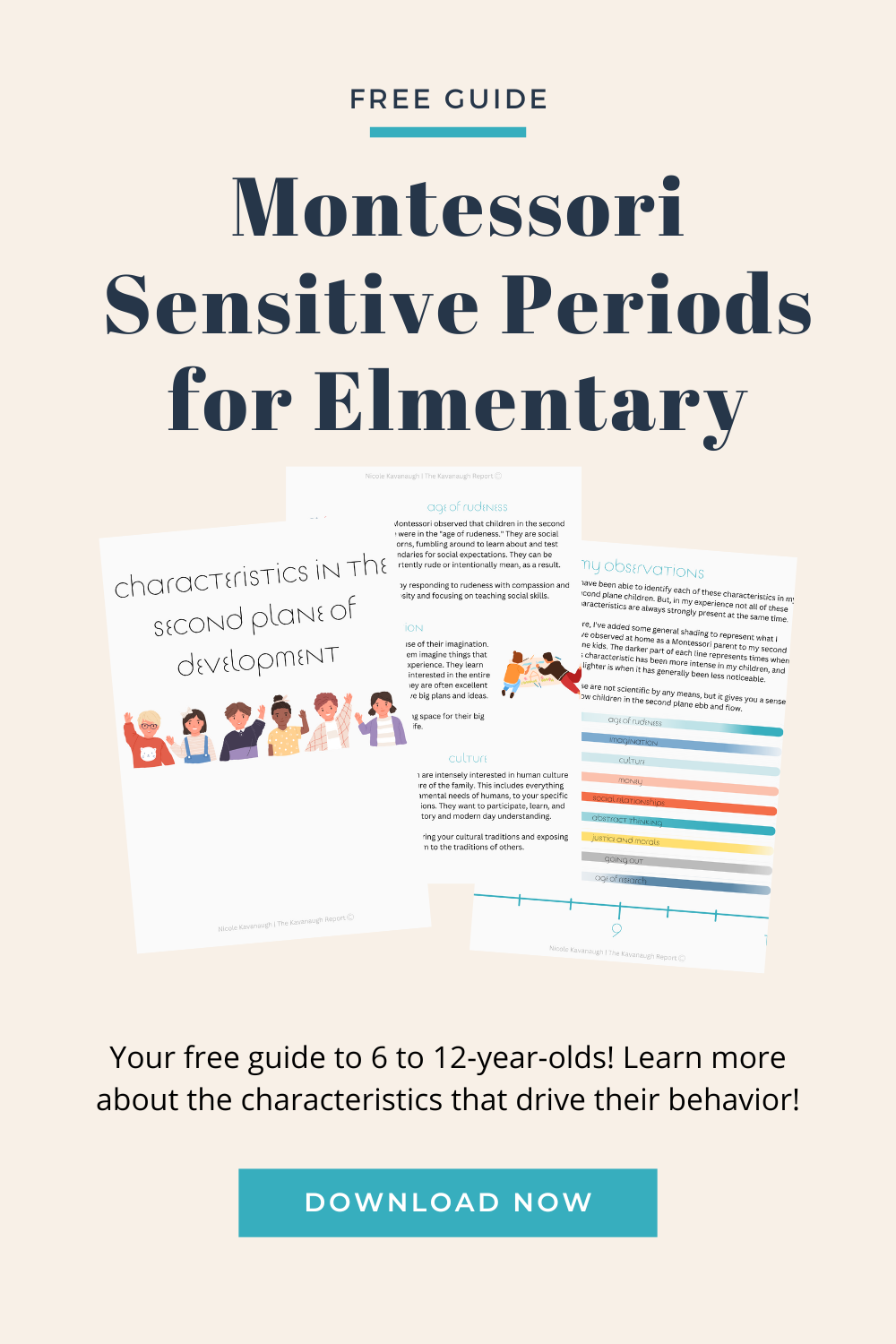The second plane of development represents a new birth for a child. From the ages of 6-years-old to 12-years-old, Dr. Montessori observed that kids are in a period of stable growth where academic life can flourish and social relationships become very important. In fact, she identified a variety of characteristics of the second plane that are important to understand as we prepare our homes and ourselves for this unique time.
What are the Characteristics of Kids in the Second Plane of Development?
All kids are going to have their own specific interests during this time, but they will all have common characteristics that influence their behavior and outlook on the world. These are deeply engrained characteristics that erupt during the second plane, and many of which fade after time.
Understanding these characteristics is really important in understanding our elementary children's motivations, capabilities and intentions. It also helps us use these characteristics to gain our children's cooperation, understanding and trust during these years.
"Development cannot result by leaving him in his former environment." Maria Montessori, From Childhood to Adolescence, p 3
Below is a graphic with the most commonly cited characteristics of elementary aged children. This list isn't exhaustive but these are meant to be the main characteristics that most children experience during this age.
While most children move through these characteristics, they don't all do so in the same way. I added the shading to share my personal experience as a Montessori parent. The darker the color, the more evident that particular characteristic was at that time. The lighter the color, the less noticeable it was. You'll notice none of the colors ever fade completely during these six years.
Are these Sensitive Periods?
Well, sort of. Many Montessorians call these the characteristics sensitive periods of the second plane. Maria Montessori, herself, also used the term sensitive period to describe some of them. However, she also used the terms "age of" and "characteristic." If it helps you to think of these as sensitive periods, do it! Just know that many terms are used for these observations.
"But we would like to help the child to reach loftier conceptions. What must first be understood is our aim, which is to follow as nearly as possible, as all-inclusively as possible, the needs of growth and of life." Maria Montessori, From Childhood to Adolescence p 55
Want more information about each of these characteristics or sensitive periods? I have created a PDF cheat sheet about these characteristics in the second plane. To create this, I included the most commonly cited characteristics for this age group. This list is not meant to be completely exhaustive but is meant to include the most popular and important.
With a deeper understanding of what is driving our children during the second plane of development, we can better prepare our environment and ourselves to meet their needs. I hope this helps you on this unique part of your parenting journey.
What characteristics have you observed in your second plane child?




